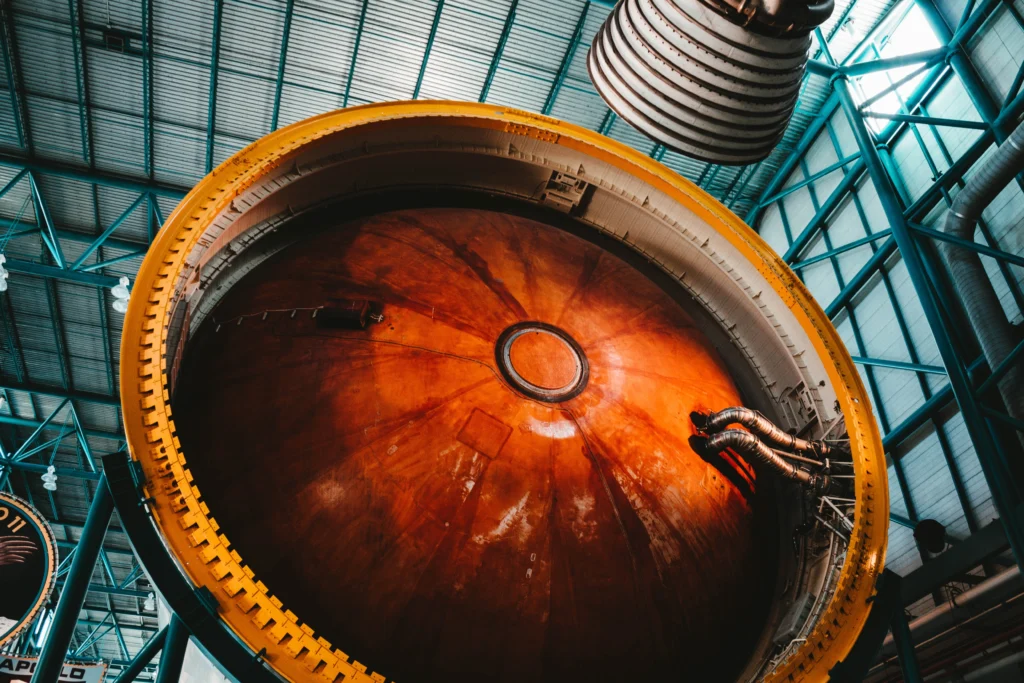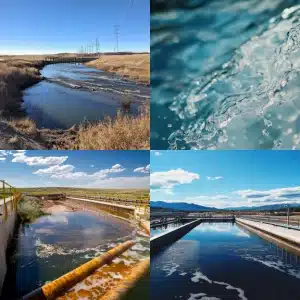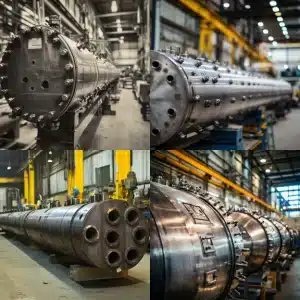
Corrosion failure analysis examines how metal surfaces deteriorate in pressure vessels, identifying root causes like moisture, chemical exposure, and operational stresses to prevent costly failures. By combining inspections, material testing, protective coatings, and expert guidance, facilities can extend equipment life, improve safety, and reduce maintenance downtime.
Why Corrosion Failure Analysis Matters
Corrosion failure analysis is essential for safeguarding pressure vessels from hidden metal deterioration. By examining how corrosion develops, spreads, and compromises materials, you can identify root causes like moisture, chemical exposure, or operational stresses. Effective corrosion failure analysis combines visual inspection, microscopic evaluation, and non-destructive testing to detect early signs before costly failures occur. Choosing the right alloys, applying protective coatings, and following ASME standards all help prolong vessel life. Partnering with experts ensures actionable solutions. Regular corrosion failure analysis minimizes downtime, reduces maintenance costs, and keeps pressure vessels safe and reliable in industrial operations.
Corrosion Failure Analysis Basics
Corrosion failure analysis is the process of examining materials that have degraded through chemical or electrochemical reactions. This specialized form of material failure analysis focuses on how corrosion sets in, spreads, and compromises the integrity of metals or alloys. Conducting corrosion failure analysis uncovers damage patterns that reveal root causes such as moisture, chemical exposure, or design oversights. Understanding why a surface pit appeared or a flange broke down isn’t just about diagnosing a single part it’s about preventing future issues.
Industries that rely on pressure vessels or pipelines know that even minor cracks can cause major safety incidents. By applying corrosion failure analysis methods, you can identify problems early, upgrade protective coatings, or switch to a more corrosion-resistant alloy. Effective corrosion failure analysis ensures that issues are detected before they compromise vessel integrity, helping to extend service life and maintain operational safety.
Why Corrosion Happens
Corrosion occurs when metal surfaces react with oxygen, water, or other aggressive elements. Conducting corrosion failure analysis helps identify how and why these reactions compromise materials. For example, moist and salty conditions can accelerate rusting in carbon steel, while certain chemicals drive galvanic reactions where dissimilar metals corrode faster. Industrial processes using acidic or alkaline solutions can cause uneven surface corrosion, and thorough corrosion failure analysis ensures these issues are detected early to prevent structural failures.
Small patches of rust or discoloration should be treated as warning signs. Addressing underlying conditions like poor drainage or inadequate coatings prevents corrosion from escalating. Conducting corrosion failure analysis helps clarify the specific factors that trigger pitting or thinning in your metal framework, and thorough Corrosion failure analysis ensures these issues are addressed before they compromise structural integrity.
Connecting to Broader Failure Analysis
Corrosion is one of many ways that materials can fail. Sometimes, you’ll find it alongside fatigue cracks or structural stress points. That’s why corrosion failure analysis frequently overlaps with broader inquiries like material failure analysis or pressure vessel failure analysis. By teaming corrosion insights with mechanical and metallurgical data, you form a complete picture of why a component suffered damage and how to prevent a repeat event.
Identify Hidden Corrosion Triggers
Pinpointing the root causes of corrosion through corrosion failure analysis can empower you to reorganize maintenance schedules and adopt better safety protocols. Performing thorough corrosion failure analysis helps identify the elements that accelerate or hinder corrosion, allowing you to manage your system more effectively and prevent unexpected failures.
Environmental Factors
Exposure to rain, humidity, salt in the air, or industrial chemicals accelerates corrosion. Facilities near coastal areas may see faster oxidation on steel structures. High temperatures can turn a five-year problem into an immediate threat, while stagnant water or trapped moisture accelerates internal corrosion. Regular maintenance and protective coatings, as discussed in Red River LLC’s prefabrication processes, help prevent damage.
Metallurgical Vulnerabilities
Not all metals corrode equally. Steel, aluminum, and stainless steel develop distinct corrosion patterns. Improper welding or joining dissimilar metals can cause galvanic corrosion. Using the right alloy and confirming material compatibility, as highlighted in Red River LLC’s ASME-certified pressure vessels, reduces future risks.
Operational Stresses
Excessive pressure spikes, repeated thermal cycles, or abrupt changes in flow rates can fatigue even the toughest materials. When cracks begin to form due to these operational extremes, corrosion failure analysis can help identify how corrosion exploits those fractures and spreads more quickly. In fact, stress corrosion cracking can be far more dangerous because it’s often invisible to the naked eye until a serious failure occurs, making regular corrosion failure analysis essential for early detection and prevention.
A good strategy is to track pressure readings over time and schedule regular checkups. If you spot anything out of the ordinary, like hairline cracks around weld joints, then you may want to enlist corrosion failure analysis to confirm whether stress corrosion is already at work. Performing thorough corrosion failure analysis allows you to correlate the location of cracks to operational data, adjust daily procedures, reduce pressure shocks, and implement advanced design measures to prevent future cracking.
Explore Key Investigative Methods
You may be wondering how corrosion failure analysis actually unfolds. Investigators typically adopt a series of laboratory and field-based steps to pinpoint the root cause. While every facility has its particular approach, many follow a pattern of detailed inspection, material testing, and thorough documentation.
Visual Inspection and Documentation
Visual checks are your first line of defense. Before diving into microscopic or chemical tests, it helps to gather high-resolution photographs of the affected areas. You might find clear patterns, such as rust rings concentrated around weld seams or random patches on the surface. These early observations create a basis for further laboratory testing.
Try supplementing your images with notes about the environment, operational schedules, or any abnormal events leading up to the damage, using insights from corrosion failure analysis. A robust photographic log and consistent written record are vital for ensuring that nothing slips through the cracks, and this data also helps you communicate effectively with specialists if your in-house team lacks certain testing capabilities.
Microscopic and Chemical Analysis
Microscopic evaluation often uncovers minuscule pits, cracks, or inclusions that aren’t visible to the naked eye. Investigators use scanning electron microscopy (SEM) and energy dispersive X-ray spectroscopy (EDS) as part of corrosion failure analysis to identify chemical compositions and detect improper alloys or external contaminants driving the corrosion reaction. In addition, destructive testing allows experts to see how deeply corrosion has penetrated, and thorough corrosion failure analysis clarifies whether protective coatings worked as intended or if they failed under aggressive conditions.
Non-destructive Testing (NDT)
When you need to keep equipment operational or limit disruptions, non-destructive testing methods, guided by corrosion failure analysis, can be a life-saver. Ultrasonic testing, magnetic particle inspections, and radiography spot hidden flaws or thinning materials without sacrificing structural integrity, allowing you to gauge corrosion’s severity and distribution across large surfaces.
NDT techniques blend seamlessly with the broader scope of what is corrosion failure analysis because they reveal how widespread the damage is in real time, without dismantling vital systems. For pressure vessels, NDT can highlight if the corrosion is localized or more uniform across weld joints and curved surfaces. Such insights inform your maintenance priority list, ensuring you schedule repairs or replacements wisely.
Prevent or Mitigate Corrosion in Pressure Vessels
Corrosion in pressure vessels can lead to hazardous outcomes, so it’s worth developing a proactive plan that incorporates corrosion failure analysis. Beyond typical cleaning routines, you can adopt design strategies and specialized coatings to reduce the risk of metal degradation.
Optimize Material Choice
Selecting the right alloy or composite can make the difference between a vessel that lasts five years and one that safely runs for decades. Conducting corrosion failure analysis helps determine which materials best withstand abrasive chemicals, high salt content, or temperature extremes. While advanced alloys like duplex stainless steel or nickel-based variants may cost more initially, they minimize downtime and maintenance over time. Red River LLC emphasizes corrosion failure analysis during the design phase to align material choice with pressure requirements and environmental factors, reducing corrosion risks and preserving safety margins for daily operations.
Proper Surface Treatments
Coatings and linings act as a protective shield between the metal and aggressive agents, and corrosion failure analysis can help determine the most effective treatment. Whether using epoxy-based paints, rubber linings, or thermal-spray coatings, selecting the right option blocks direct contact with corrosive fluids. You might also add sacrificial anodes that corrode in place of the main structure, extending the lifespan of your pressure vessel.
It’s often good practice to pair a professional coating process with an inspection routine informed by corrosion failure analysis to confirm the coating’s integrity. If you notice chipping, cracking, or peeling, applying another layer or switching to a more durable coating might prove essential. Think of these protective measures as insurance for your industrial assets: you invest a little upfront to avoid larger expenses and hazards down the road.
Adapting to Changing Demands
Your facility requirements might evolve, and the performance thresholds for your pressure vessels can shift. Sometimes, expansions in capacity or new production lines introduce different chemicals that accelerate corrosion under the original design constraints. When that happens, it’s wise to revisit your earlier assumptions. Conducting how to perform corrosion failure analysis on the new setup may uncover previously unknown vulnerabilities.
You also want to evaluate the vessel’s performance after operational changes. If you raise pressure levels or adjust temperature set points, keep an eye out for localized stress points, and consider corrosion failure analysis to assess early signs of pitting or stress corrosion cracking. By proactively scheduling NDT checks or material testing, your team can catch minor damage early, preventing it from escalating into a major repair job.
Coordinate with Experts and Standards
No matter how hands-on your approach is, it’s helpful to collaborate with specialists who grasp the nuances of corrosion and compliance, and rely on corrosion failure analysis to guide decisions. In the sphere of industrial process equipment, you might leverage recognized codes from the American Society of Mechanical Engineers (ASME) or partner with teams like Red River LLC, which has deep knowledge in modular industrial process solutions, pressure vessel design, and prefabrication.
Role of ASME Standards
ASME guidelines define rigorous design, fabrication, and inspection criteria, and corrosion failure analysis helps ensure these standards are effectively applied. For corrosion-related issues, such standards confirm that your pressure vessel has sufficient material thickness to accommodate controlled metal loss and decisive safety factors for unexpected surges, providing a clear path to improved reliability and reduced risk of accidents.
Complying fully with ASME requirements often involves verifying weld quality, demonstrating that chosen materials can resist particular chemical exposures, and documenting every step of production. If your corrosion failure analysis uncovers that your vessel is losing thickness faster than expected, you may need to strengthen certain components or switch to an improved alloy, all under the umbrella of ASME compliance.
Red River LLC’s Contribution
Red River LLC has excelled in contract manufacturing of ASME pressure vessels, including piping modules, prefabricated facilities, and packages, while leveraging corrosion failure analysis to guide material and design choices. Their team emphasizes openness in communication and continuous improvement many employees hold Lean Six Sigma training helping ensure meticulous fabrication and innovative solutions to keep corrosion at bay.
Prefabrication is a strong point of Red River LLC, and their approach incorporates corrosion failure analysis to optimize module assembly in controlled settings. By managing temperature, humidity, and build processes, the team reduces errors, uses Building Information Modeling (BIM) to identify clashes early, and addresses pressure, corrosion, and flow-related concerns, keeping uptime high and maintenance costs low.
Incorporate Corrosion Failure Analysis Findings
After you complete a thorough investigation, the next step is turning those insights into actionable improvements, guided by corrosion failure analysis. You may discover that certain parts need a stronger coating, the entire system requires a different metal alloy, or flow rates must be adjusted to prevent erosion-corrosion. Armed with robust test data, you can make confident and cost-effective decisions.
A Step-by-step Implementation
- Review your comprehensive report, noting the main causes of corrosion, whether it’s chemical exposure, mechanical stress, or inadequate design.
- Identify which corrections have the biggest impact for the least cost (perhaps coating a high-wear area or switching to stainless steel in the next build).
- Plan for minimal downtime. If you need to replace a large section of piping, schedule it alongside existing maintenance windows or production lulls.
- Re-check the system during routine intervals to confirm that the changes worked. If corrosion rates dropped as expected, expand the solution to other parts of your facility.
By turning your analysis results into a concrete action plan, guided by corrosion failure analysis, you reinforce your facility’s safety and performance. Since corrosion is an ever-present risk, a one-time fix usually isn’t enough, so treat your results as a living guide for future decision-making, whether upgrading a vessel or rethinking the layout of an entire plant.
Connection to Broader Reliability Measures
Corrosion is just one dimension of material failure risks. You could encounter cracks due to fatigue, or see leaks formed by poor welding techniques. For a holistic safety net, link your corrosion inspection data to overarching reliability checks, including mechanical failure analysis or metallurgical failure analysis. The synergy of these approaches helps you avoid blind spots.
Coordinating across multiple types of analyses, including corrosion failure analysis, is especially wise if your site handles hazardous fluids or operates in extreme weather conditions. By mapping total stress factors pressure loads, chemical exposures, thermal shifts you can gauge long-term reliability more accurately, preventing finger-pointing or guesswork and providing evidence-based solutions that stand up under scrutiny.
Strengthening Reliability Through Corrosion Failure Analysis
Corrosion failure analysis is a vital resource in safeguarding your pressure vessels and industrial systems. By regularly examining metal surfaces for signs of rust or damage, you’re positioning your facility to address problems before they escalate. And when you apply specialized inspection techniques like microscopic evaluation or non-destructive testing you can tailor your solutions and pick the right materials to prolong your equipment’s life.
Good news: once you establish consistent preventive measures, you’re likely to see fewer shutdowns caused by sudden leaks or extensive repairs. Whether you adjust your material choices, refine your surface treatments, or consult an expert team such as Red River LLC, your efforts can have a real impact on operational stability. There’s no single blueprint for absolute corrosion prevention, but thorough corrosion failure analysis will reveal the smartest route forward. Each improvement makes your system safer, more efficient, and ready to handle the demands of tomorrow.
Take Action with Corrosion Failure Analysis Today
Partner with Red River LLC to select the right materials, coatings, and inspection methods. Don’t wait for corrosion to cause costly downtime request a quote to strengthen your system now.
Frequently Asked Questions
1. What is corrosion failure analysis?
Corrosion failure analysis is the process of investigating metal deterioration to determine the causes, mechanisms, and extent of corrosion in materials or structures.
2. How to perform corrosion failure analysis?
To perform corrosion failure analysis, experts examine the corroded material, identify corrosion types, analyze environmental and operational factors, and use laboratory tests to determine the root cause.
3. Why is corrosion failure analysis important?
Corrosion failure analysis is important because it helps prevent unexpected equipment breakdowns, reduces maintenance costs, and ensures the safety and longevity of structures.
4. Can coatings completely stop my vessels from corroding?
Coatings form a protective barrier, but they can crack or peel over time. Regular inspections help you detect areas where the coating breaks down, so you can reapply or choose a more durable protective layer.
5. Why should I consider non-destructive testing methods?
Non-destructive testing methods let you detect hidden corrosion or defects without taking your system offline. Ultrasonic or radiographic checks can spot thinning or small cracks, giving you a clear picture of your vessel’s integrity while operations continue.
6. How can Red River LLC assist with corrosion issues?
Red River LLC designs and manufactures custom ASME pressure vessels and skid packages, focusing on robust materials and assembly. Their prefabrication methods reduce onsite errors that can cause or speed up corrosion. They also emphasize safety and continuous improvement across all manufacturing stages.
7. Does a single analysis method suffice to find every cause of corrosion?
Often, you’ll need a combination of visual checks, lab tests, and specialized imaging to see the full story. Corrosion can have multiple contributing factors, so a multi-step approach is the most reliable.
Key Takeaway
- Consistent inspection catches corrosion early. This minimizes expensive repairs and unexpected shutdowns.
- Material selection is crucial. Don’t settle on a material until you verify it suits your pressure and chemical conditions.
- Surface treatments and coatings matter. Regular maintenance and re-application can avoid serious corrosion damage.
- Non-destructive testing offers deep insights. It pinpoints hidden flaws without halting operations.
- Proactive partnerships pay off. Engaging with experts like Red River LLC and following ASME standards will improve reliability and prevent costly mistakes.
Related Blog Post
- What is Fatigue Failure Analysis? Red River LLC
- Fatigue Failure Analysis: Red River LLC
- Why is Structural Failure Analysis Important? Red River LLC
- Understanding Structural Failure Analysis for Pressure Vessels
- Metallurgical Failure Analysis Guide Red River LLC
- Mechanical Failure Analysis for Reliability| Red River LLC




